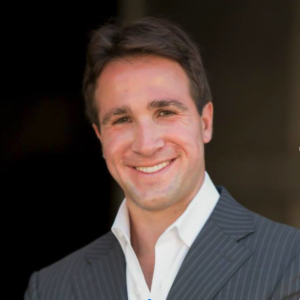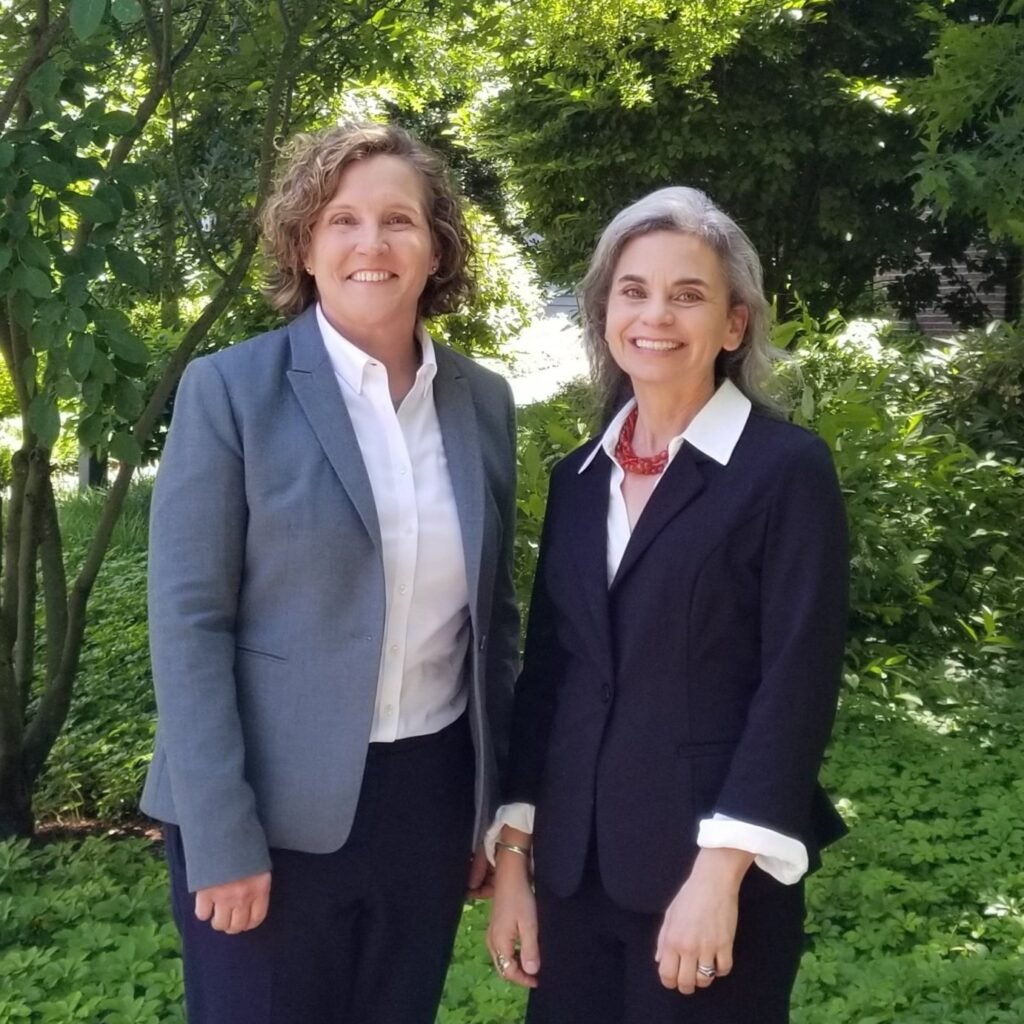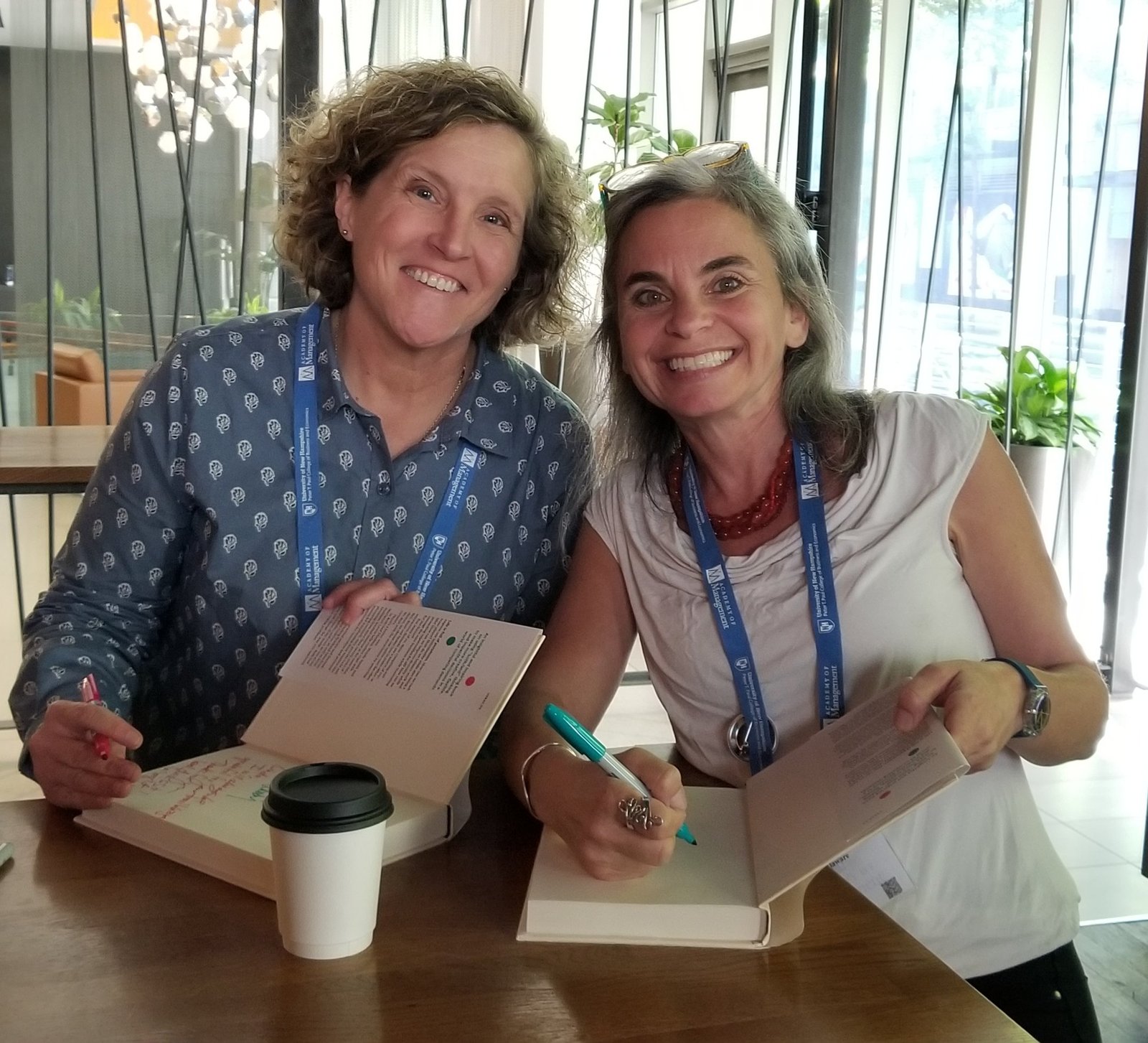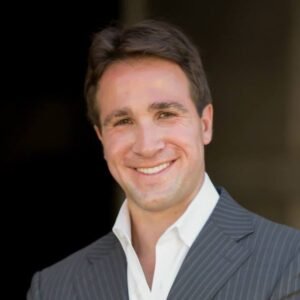I recently spoke to Wendy K. Smith and Marianne W. Lewis, authors of the new book Both/And Thinking: Embracing Creative Tensions to Solve Your Toughest Problems. Wendy is the Dana J. Johnson Professor of Management and faculty director of the Women’s Leadership Initiative at the Lerner College of Business and Economics, University of Delaware. Marianne is is dean and professor of management at the Lindner College of Business, University of Cincinnati.
Adam: Thanks again for taking the time to share your advice. First things first, though, I am sure readers would love to learn more about you. How did you get here? What experiences, failures, setbacks or challenges have been most instrumental to your growth?
Wendy: Academics say that research is ‘me’-search; we study the things that are challenging for us. I found myself struggling with key decisions that each felt like an either/or. I grappled with whether to be an academic who studied ideas or a leader who implemented them. When I started my Ph.D., I wasn’t sure if I wanted to study innovation along with my advisor or go rogue and start studying corporate social responsibility. When I gave birth to my kids, I felt pulled between my commitment to my career and my desire to be a good mom. Feeling stuck in these personal either/or questions made me wonder about other ways to respond.
Marianne: In my early career, I was studying innovation. I became increasingly focused on tensions people grappled with in its development. Should they focus on bold futuristic ideas or make more of their current strengths, on technological capabilities or human possibilities? The more I saw tensions in my research, the more I saw them everywhere. I found them in our lives, relationships, and society. Tensions are part of the human experience. From this realization, my research took on new personal meaning and depth.
Adam: What do you hope readers take away from your new book?
Marianne: Both/and thinking can help people develop more creative and sustainable solutions to their most difficult personal dilemmas and to complex global issues. We wrote this book to help people adopt this approach.
We are excited to see more people talk about living in the both/and. Huma Abedin’s recent book is called Both/And. Companies like Barclays and Starbucks use both/and language in their marketing. We see consulting firms like Deloitte, PwC, EY, and others talk about the importance of managing paradox. We are excited to see the rise of this language. Yet we also know that if both/and thinking is truly valuable, leaders need to move beyond the label and embrace the approach.
Over the last 25 years, we have been researching how leaders and employees embrace paradox and adopt both/and thinking. We have also seen a growing community of scholars studying these ideas. Our goal in this book was to bring this research together into a clear and actionable set of tools.
Adam: Through your research and in your experience, what are the keys to managing competing priorities?
Wendy: Paul Polman, CEO of Unilever from 2008-2018 offers a great example of a leader that managed competing priorities. He joined Unilever at the time that the Fortune 500 packaged goods company was in a downward spiral. They had acquired too many companies. Then they faced the global economic collapse of 2008. Polman pulled the company out of the downward spiral to become a market leader. He did so through a both/and agenda. He created the Unilever Sustainable Living Plan, in which he committed to doubling the organization’s profits while cutting their environmental footprint in half and making the planet better for all. The key to doing so was addressing several levers at once. He worked to change the system, creating structures like a higher purpose – making sustainable living commonplace – which reinforced the integration of both agendas. He also created goals, roles, and metrics that acted as guardrails to ensure they did not make decisions that went too far toward the social mission, neglecting their financial demands, or vice versa. In addition, he developed practices to make sure they were constantly reevaluating and improving their approaches. He knew that there were tensions and that surfacing those tensions could lead them to more creative outcomes. If his leaders did not raise tensions on their own, Polman asked for them. In addition to shifting the system, he worked to change his people’s hearts and minds to be able to embrace paradox and apply both/and thinking. He asked everyone in the company to identify their own goals and explore how they aligned with the Unilever Sustainable Living Plan.
Polman applied what we call The Paradox System. He knew that he had to change hearts and minds, structures and practices. He could not choose between these different tools. He needed all of them to reinforce one another.
Adam: What are the keys to making effective decisions?
Marianne: The first step to making more effective decisions is to change the question. We tend to frame decisions as tradeoffs, asking either/or questions. Leaders are taught to be clear and decisive. As business school professors, we see this all the time. For example, MBA professors start classes presenting a case study, articulating a challenge, and asking students to decide between alternative outcomes. The problem is that an either/or question narrows the outcome options. Choosing and becoming committed to one outcome can lead us down a vicious cycle. This kind of thinking is limited at best and detrimental at worst.
Consider Wendy’s dilemma of whether to be an academic or a leader/manager. Trying to make a definitive choice narrows the possibilities. The alternative is to change the question. Rather than ask, “Should I choose A or B?” we can shift to ask, “How can I accommodate A and B?” Wendy changed the question to ask how she could both research and teach ideas while also implementing them and making an impact on the world. Just shifting the question opens up a wider set of options.
The second step is to consider how we analyze decisions. Traditional either/or thinking involves what we describe as separating and analyzing. We pull apart alternatives, make extensive pro-con lists, and evaluate those options to make a choice. In contrast, both/and thinking involves separating and connecting – pulling apart the alternatives and finding synergies between them. Wendy’s decision-making depends on understanding what was important to her in becoming an academic – i.e., researching new ideas – and what was important in becoming a leader – i.e., implementing ideas. Then she can ask how these different pieces reinforce one another toward her integrative goal of making an impact on the world.
The final step involves reconsidering the ideal outcome; moving from making a choice to choosing. Either/or decision-making involves making a choice between alternatives. Both/and decision making involves choosing – coming up with alternatives that integrate the options and/or finding ways to make microshifts between the options. Sometimes we might focus on one choice and sometimes we might focus on the other, but we shift back and forth to accommodate both over time. We describe this as being consistently inconsistent and use the image of the tightrope walker who moves forward by constantly balancing between left and right. For Wendy, she can think about how she conducts research to engage more deeply with leaders and have an impact. It invites her to think about how the impact she has deepens and expands her scholarship and teaching.
Adam: What do you believe are the defining qualities of an effective leader?
Wendy: Effective leaders are paradoxical. They find comfort in the discomfort of tensions. They see competing demands as energizing and value the creative friction they provide. This includes valuing their own contradictions – being confident and humble, spontaneous and rigorous, compassionate and driven. And they seek out and embrace paradoxes in their organizations, determined to be financially and socially responsible, to build global reach and honor local demands, to focus sharply on the needs of today, and dream boldly for the future.
Adam: How can leaders and aspiring leaders take their leadership skills to the next level?
Marianne: Listening! Good leaders assert their knowledge and insight. Great leaders integrate the knowledge and insight from a variety of diverse perspectives. To do so, leaders need to talk less and listen more.
Adam: What are your three best tips applicable to entrepreneurs, executives and civic leaders?
Marianne: 1) Both/And 2) Both/And 3) Both/And.
More seriously, we find that unpacking the ideas of paradox offers a constant source of inspiration and challenge. We experience the paradox of knowledge – the more we know, the more we know we don’t know. Exploring the paradoxical nature of our world, our organizations and our leadership has invited us to think more deeply about how to address issues of diversity and inclusion, sustainability, innovation, polarization and more. Both/and is not end-all panacea, but it gets us pretty far into new ways of responding to our most challenging problems.
Adam: What is the single best piece of advice you have ever received?
Marianne: ‘Don’t believe everything that you think.’ That simple advice keeps resurfacing in my work and my own learning. We get stuck in limited, even detrimental thinking. We see what we expect to see. Fuel self-fulfilling prophecies. Keep leaning to our preferred side of an either/or. Yet life is messy – our world is complicated, uncertain, and dynamic. There is so very much to learn, and it takes insights from many different angles to work through the mess.
Wendy: Two great advisors offered me key insight that has shaped my thinking and this book [as you can see, its hard for us to think in the “singular”!]. Ellen Langer, Harvard University professor of psychology, often reminded me that it’s not about making the right decision but about making the decision right. I have leaned on this idea many times to expand how I think about decision-making when I get stuck in either/or thinking. Mike Tushman, Harvard Business School Professor of Business Administration, reminded me that when people resist and reject your ideas, there is often a big idea there to pursue. His insight was a constant source of motivation when confronting skeptics that hold tight to either/or thinking. It’s also a call to more of us to have the courage to embrace big ideas to address our greatest challenges.









